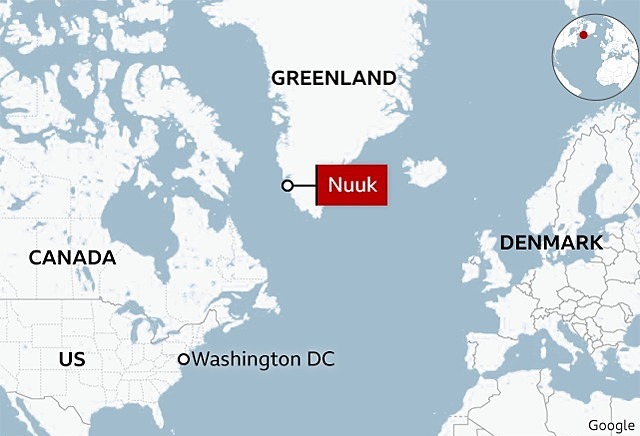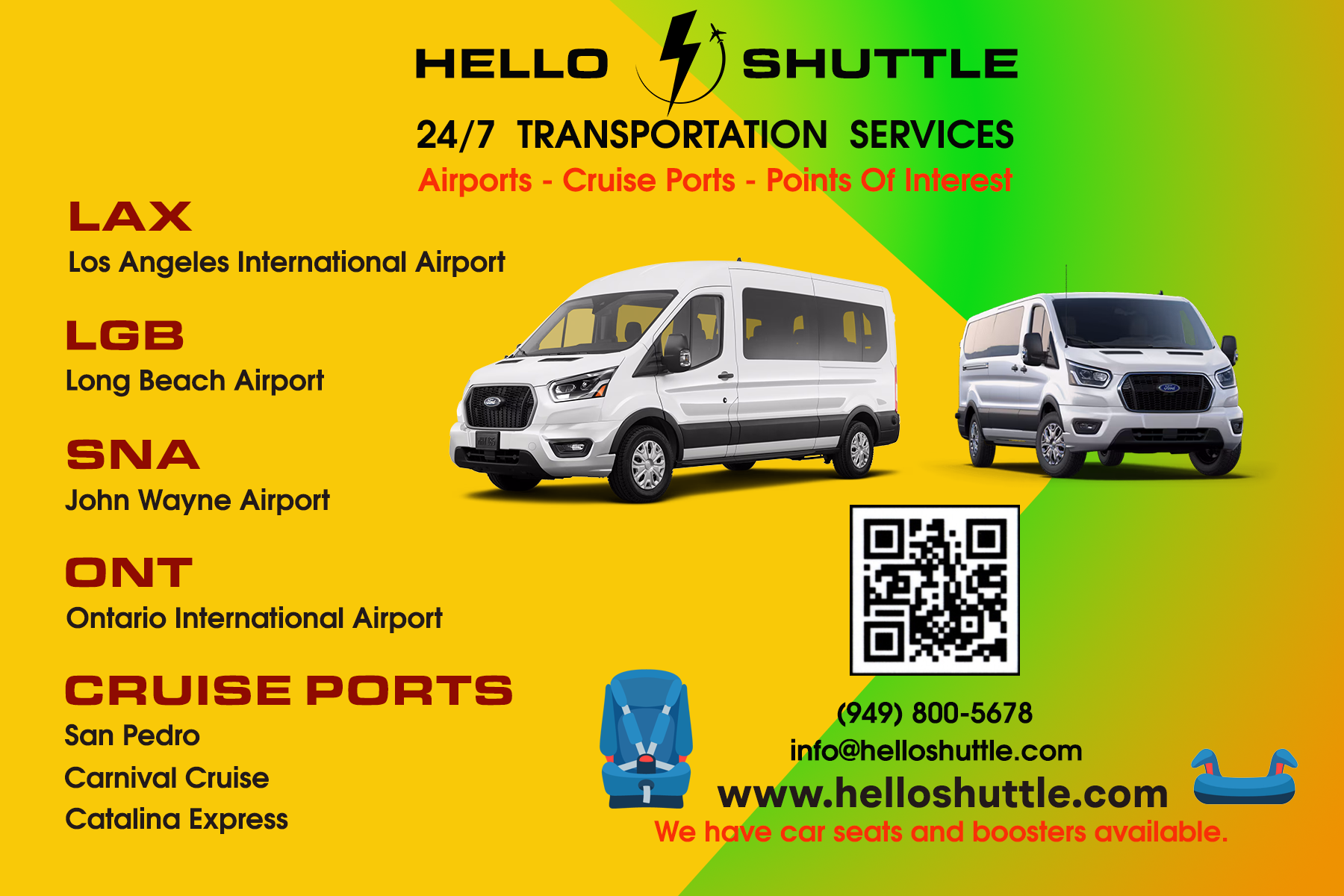
Trump’s push to buy Greenland may stem from the island's strategic location, abundant resources, and an effort to showcase influence ahead of his return to the White House.
During his first term, Donald Trump suggested that the U.S. should purchase Greenland, a self-governing territory of Denmark. The proposal, however, was quickly dismissed by Greenlandic and Danish leaders, who refused to sell the island at any price.
The idea resurfaced recently as President-elect Trump raised the issue of "acquiring Greenland" while nominating Kenneth Howery as U.S. Ambassador to Denmark for his second term.
“For national security and global freedom, U.S. ownership and control of Greenland is an urgent requirement. Ken will wholeheartedly represent America’s interests,” Trump wrote on TruthSocial on December 22. Observers suggest that in addition to national security, Trump’s interest in Greenland may also be driven by the island’s resource wealth and its strategic maritime position.
Greenland is the world’s largest island, situated near North America between the Atlantic and Arctic Oceans, with a population of about 57,000. Covering approximately 2.16 million square kilometers, it is larger than Mexico and more than three times the size of Texas. The island has been a self-governing territory under Denmark since 1814, with Copenhagen retaining some control over its foreign policy.
Strategic Importance
Greenland's strategic significance dates back to the Cold War. In 1951, the U.S. established Thule Air Base in western Greenland, equipped with radar for early ballistic missile warning, capable of detecting intercontinental missiles heading toward the U.S. The base was transferred to the U.S. Space Force in 2020 and renamed Pituffik Space Base.
The island is also rich in natural resources, including oil, rare earth elements, and uranium, according to the UK-based Royal Society of Chemistry. Rare earth elements are crucial for producing electronics, electric vehicles, and even weapons.
Melting Ice and New Shipping Routes
Another factor driving Trump’s interest in Greenland is the prospect of new shipping routes in the Arctic as global warming melts polar ice. Amid growing competition among global powers for influence in the Arctic, the U.S. aims to prevent Russia and China from expanding their presence in Greenland and the surrounding areas.
As a strong proponent of the "America First" policy, Trump is likely to pursue aggressive strategies to protect U.S. economic interests, even at the expense of allies. This approach could align with his perspective on acquiring Greenland. "The premise here is that what’s good for America is good for the rest of the world," Victoria Coates, a senior national security official during Trump’s first term, told Reuters. “He has a clear vision of what benefits America in any situation.”
Historical Attempts to Buy Greenland
Trump is not the first U.S. president to consider buying Greenland. In 1867, Secretary of State William Seward proposed purchasing Greenland and Iceland from Denmark for $5.5 million in gold, though Washington never formally pursued the idea. That same year, Seward successfully negotiated the purchase of Alaska from Russia for $7.2 million.
Following World War II, President Harry Truman offered $100 million for Greenland, but the proposal was rejected. In 2019, The Washington Post estimated that purchasing Greenland could cost the U.S. as much as $1.7 trillion today. On December 23, Greenlandic leader Mute Egede reiterated that the island “is not for sale and will never be sold.”
Trump’s Current Intentions Unclear
It remains uncertain how serious Trump is about this proposal. When he raised the idea in 2019, Rasmus Leander Nielsen, a professor at the University of Greenland, noted that Denmark cannot sell the island under its 2009 Self-Government Act, which emphasizes that Greenlanders are also Danish citizens.
The most feasible scenario for Trump would involve Greenland gaining independence and deciding to sell itself to the U.S. Lawmakers in Greenland recently drafted a constitution in preparation for eventual independence from Denmark, though the timeline remains unclear.
Some officials close to Trump or involved in his transition team have reportedly engaged in informal discussions about potential pathways to acquiring Greenland, according to three sources cited by Reuters.
Other Options
Another viable option would be signing a Compact of Free Association (COFA) with Greenland, should the island gain independence from Denmark. Under a COFA agreement, the U.S. would achieve a high degree of economic integration with the participating country while allowing it to remain independent. The U.S. currently has COFA agreements with Micronesia, the Marshall Islands, and Palau.
Beyond Greenland, Trump has recently made bold statements about reclaiming control of the Panama Canal from Panama and joked that Canada is "America’s 51st state," referring to Prime Minister Justin Trudeau as "the governor of the state."
Broader Implications
Experts believe the U.S. is unlikely to achieve any of Trump’s proposed objectives related to Greenland, the Panama Canal, or Canada. However, these remarks underscore Trump’s "America First" vision, which extends to asserting power beyond U.S. borders for trade and national security.
“It’s hard to predict how serious he is about these ideas or how much the world takes them seriously,” Frank Sesno, a professor at George Washington University, told AFP. “Trump puts other leaders in the position of deciphering what he means.”
Elliott Abrams, a senior fellow at the Council on Foreign Relations, suggested that Trump’s comments could also carry strategic implications.
“Trump is turning up the pressure on Trudeau. I think this is calculated for trade negotiations,” Abrams told Reuters. Trump has previously threatened to impose tariffs on Canadian goods unless Canada curbs migration and drug flows into the U.S.
Canada, along with Mexico, is one of the U.S.’s top trade partners in North America. The three nations are set to review the U.S.-Mexico-Canada Agreement (USMCA) in 2026. The agreement, which replaced NAFTA, came into effect in 2020 during Trump’s first term.
“You’re likely to see similar pressure tactics with Mexico,” Abrams added.
(Sources: The Washington Post, AFP, Reuters)
Hello Shuttle will strive to bring the latest updates. At the end of the day.
Are you looking for reliable airport and cruise port transfer services in Los Angeles?
We offer professional, safe, and punctual transportation from
Los Angeles Airport - LAX
Long Beach Airport - LGB
John Wayne Airport - SNA
San Pedro cruise port
Long Beach cruise port
Disneyland
and other destinations.
Let us make your journey stress-free and comfortable with our dedicated drivers and high-quality vehicles. Book now for the perfect travel experience at www.helloshuttle.com or call 944-800-5678!


